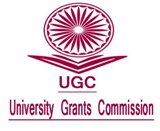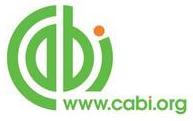Information Seeking Behaviour of Shrimp Farmers and their Perception towards Technology Dissemination through Mobile Phones
DOI:
https://doi.org/10.26725/JEE.2017.1.29.5787-5796Keywords:
Aquaculture extension, m-extension, knowledge dissemination, mobile app.Abstract
A study was conducted among the shrimp farmers to ascertain their information seeking behaviour and perception concerning extension service through mobile phones. The findings indicate that the farmer respondents were of the perception that mobile phone-aided extension service is a viable, expedient, prompt, cost-effective and novel approach. Further they expressed that a dedicated mobile app on shrimp farming with dynamic content modules on ‘disease diagnosis, calculations for water quality corrections, feed management, pond risk management and post your query ’would be very useful for farmers and extension workers to update their capacity and sharing of field experiences. Therefore, developing a mobile app on shrimp farming, incorporating the above features would enhance the access to quality information and minimise the information gap among the shrimp farmers.References
Anbarasan & Karthikeyan, C. (2014). Evaluating the Effectiveness of ‘e-velanmai’ (e-agriculture) Model of Extension through Mobile Telephony, Trends in Biosciences 7(19), 2870-2873 pp.
Dileepkumar, G. (2012). ICT Innovations for Agriculture and Rural Development.Presented in Proceedings 8th Convention of Grameen Gyan Abhiyan-Rural Knowledge Movement, M.S. Swaminathan Research foundation, Chennai, October 28-29, 2012.
Ganesan, M., Karthikeyan, K., Prashant, S & Umadikar, J. (2013). Use of mobile multimedia agricultural advisory systems by Indian farmers: Results of a survey, Journal of Agricultural Extension and Rural Development,
(4), 89-99.
Jayanthi, M. & Ashokan, M. (2016) Constaints faced by M-Kisan users Journal of Extension Education, 28 (1), doi : http://dx.doi.org/10.26725/JEE.2016.1.28 5622-5624
Kumaran,M., Krishnan, M & Ravichandran, P. (2007). Extension Services in Coastal Aquacultrure : Need For a Public and Private Partnership, Indian Journal of. Fisheries, 54(1), 75-83.
Mruthunjaya & Adhiguru, A. (2005). ICT for livelihood security: a realitycheck. Mainstreaming ICTs 2(2),14-18.
NSSO.(2005). Situation Assessment Survey of Farmers. Report No.499(59/33)2. Government of India New Delhi.
Omotesho, K. F., Ogunlade, I & Ayinde, O. E. (2015). Analysis of farmers’ perception of the accountability of agricultural extension services in Oyo State, Nigeria. Sarhad Journal of Agriculture, 31(2), 94-100.
Osondu, C. K & Ibezim, G. M. C. (2015). Awareness and Perception of Farmers to the Use of Information and Communication Technologies (ICTs) in Agricultural Extension Service Delivery: A Case Study of Imo State, Nigeria, International Journal of Agriculture Innovations and Research, 4(1), 55-60.
Planning Commission, Govt. of India. (2007). Recommendations of Working Group on Agricultural Extension for Formulation of Eleventh Five Year Plan (2007-12), Planning Commission, Government of India, New Delhi. http://planning commission.nic.in/plans/planrel/11thf.htm.
Swathilekshmi, P.S., Chandrakandan, K & Balasubramani, N. (2008), Information Utilization Behaviour and Constraint Analysis among Shrimp Farmers. Indian Journal of Social Research, 49(3),265-272.
Downloads
Published
How to Cite
Issue
Section
License
Authors who publish with JEE agree to the following terms:
- Authors retain copyright and grant JEE right of first publication with the work simultaneously licensed under a Creative Commons Attribution License that allows others to share the work with an acknowledgement of the work's authorship and initial publication in this journal.
- Authors are able to enter into separate, additional contractual arrangements for the non-exclusive distribution of the journal's published version of the work (e.g., post it to an institutional repository or publish it in a book), with an acknowledgement of its initial publication in this journal.
- Authors are permitted and encouraged to post their work online (e.g., in institutional repositories or on their website) prior to and during the submission process, as it can lead to productive exchanges, as well as earlier and greater citation of published work (See The Effect of Open Access).
Extension Education Society
https://creativecommons.org/licenses/by-nc-sa/4.0/
This work is licensed under a Creative Commons Attribution-NonCommercial-ShareAlike 4.0 International License.













.png)

